Chicken Marbella Bake
Ever wanted to make a dinner that feels fancy but doesn’t require culinary school skills?
Chicken Marbella is your answer!
This Mediterranean-inspired dish combines sweet, salty, and tangy flavors in one spectacular bake that’ll have everyone thinking you spent all day in the kitchen. (Spoiler: you didn’t!)
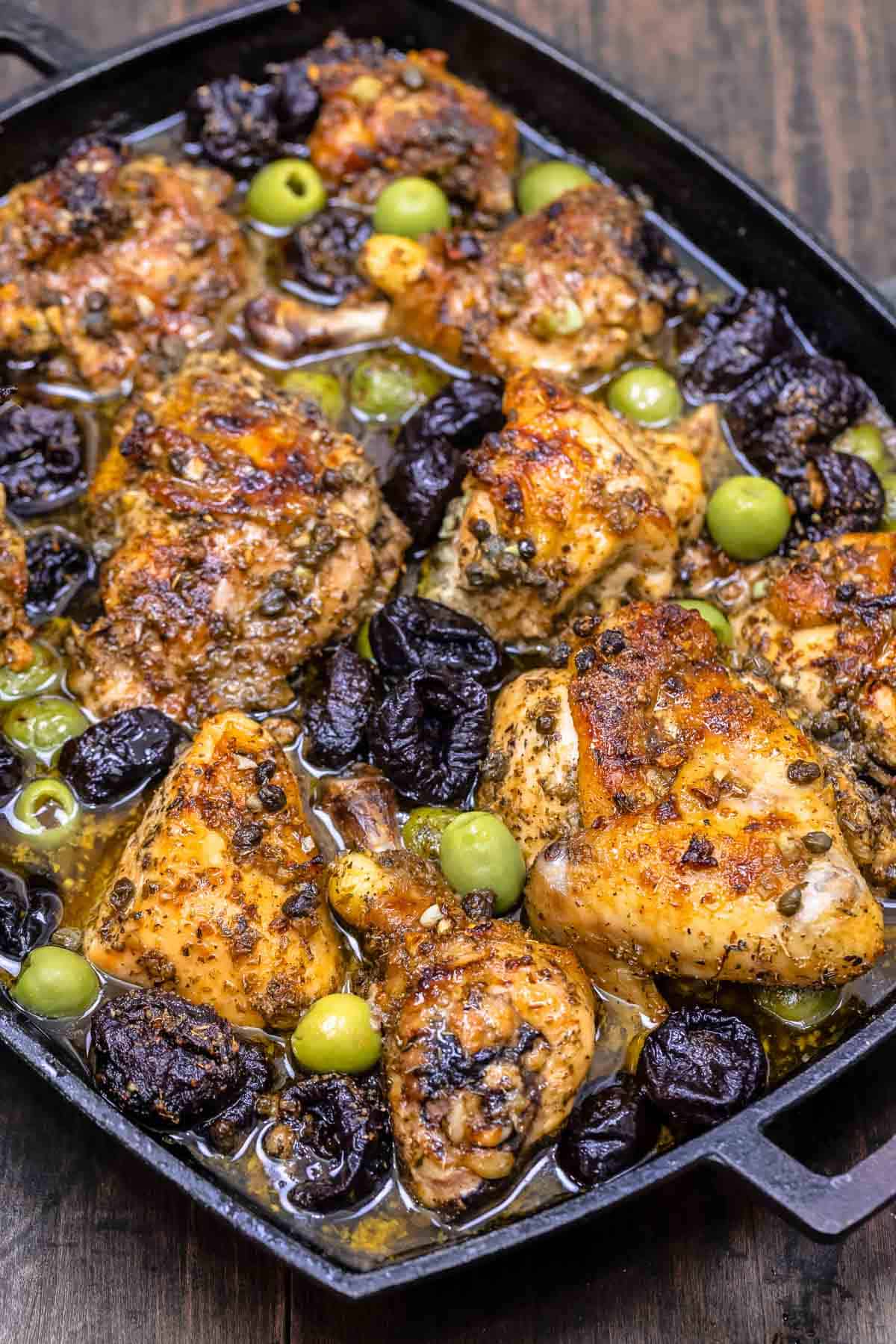
What makes this dish truly special is the incredible marriage of flavors – prunes provide natural sweetness, green olives bring briny saltiness, and capers add that perfect tangy pop.
The overnight marinade infuses the chicken with all these flavors, resulting in meat that’s tender, juicy, and packed with personality.
This simplified version of the classic Silver Palate recipe delivers all the wow factor with less sugar and perfectly portioned for a family meal.
Ingredients
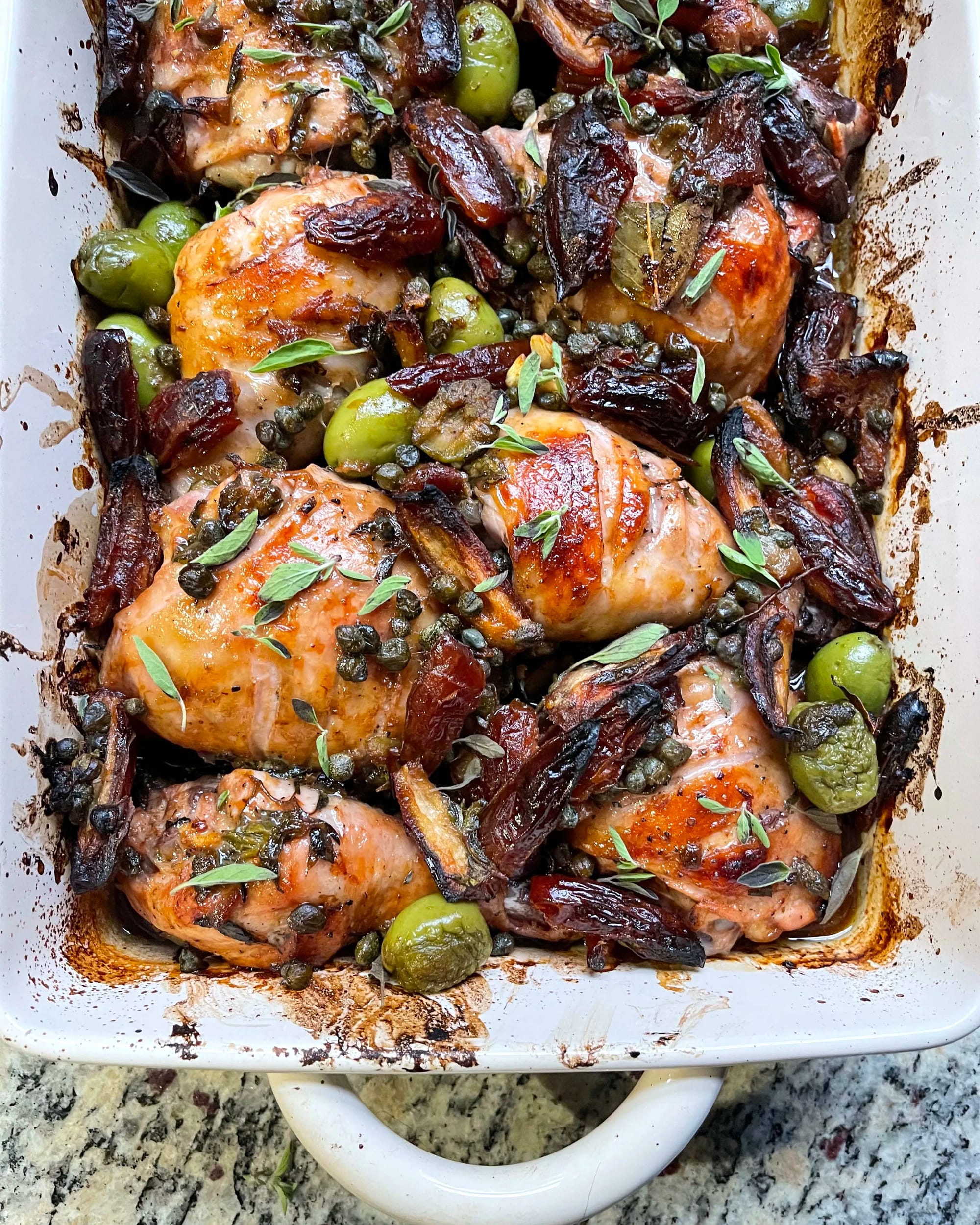
For the chicken and marinade:
- 1 whole chicken, cut up
- 3 bay leaves
- 1 head garlic, peeled
- 1/2 cup pitted prunes
- 1/2 cup pitted Spanish green olives
- 1/4 cup capers, with a little bit of juice
- 1/4 cup red wine vinegar
- 1/4 cup extra virgin olive oil
- 2 tablespoons dried oregano
- 1 teaspoon kosher salt
- 1/2 teaspoon black pepper
For baking and finishing:
- 1/2 cup white wine
- 1/4 cup brown sugar
- 2 tablespoons chopped parsley, optional
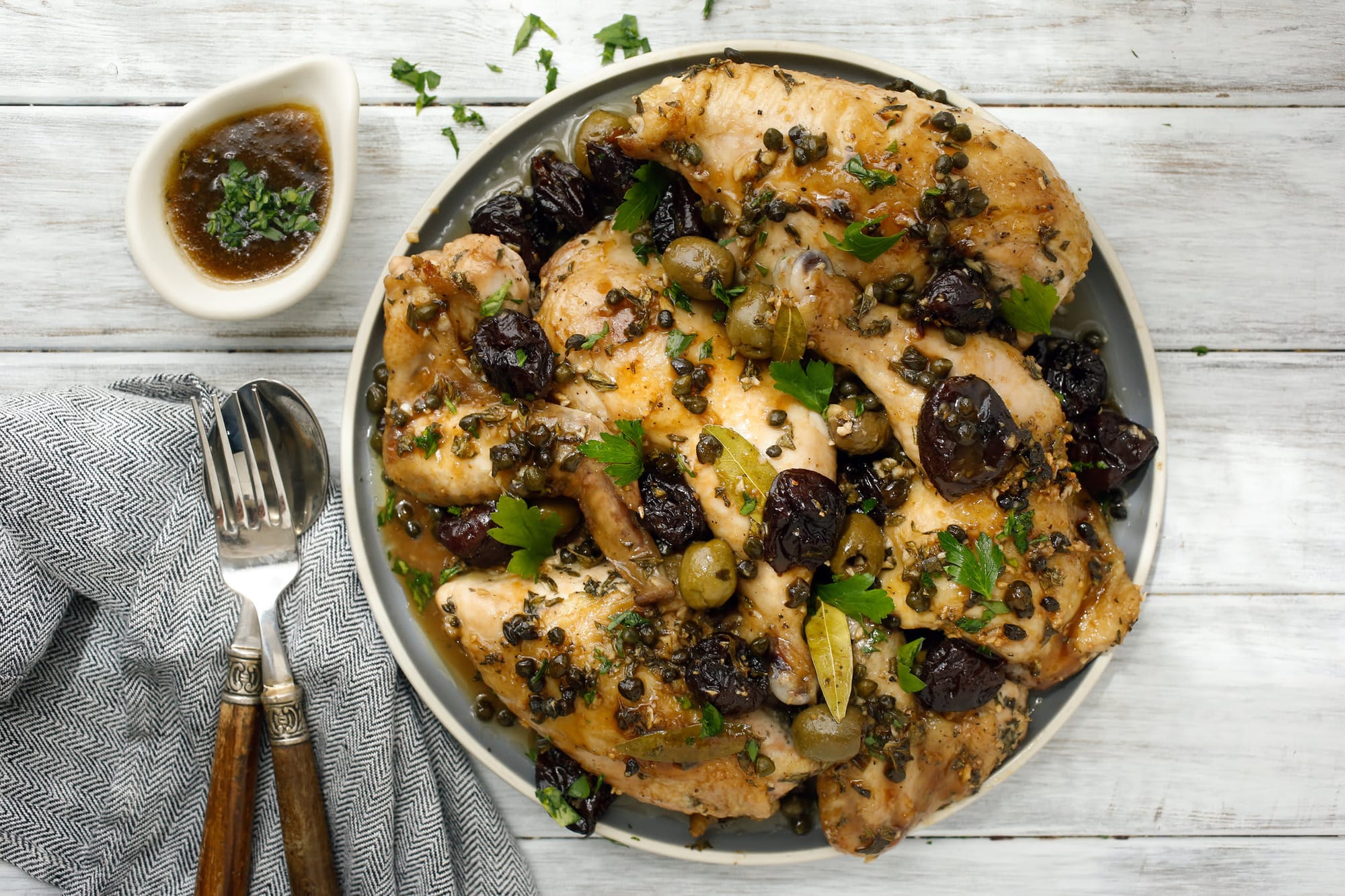
Steps
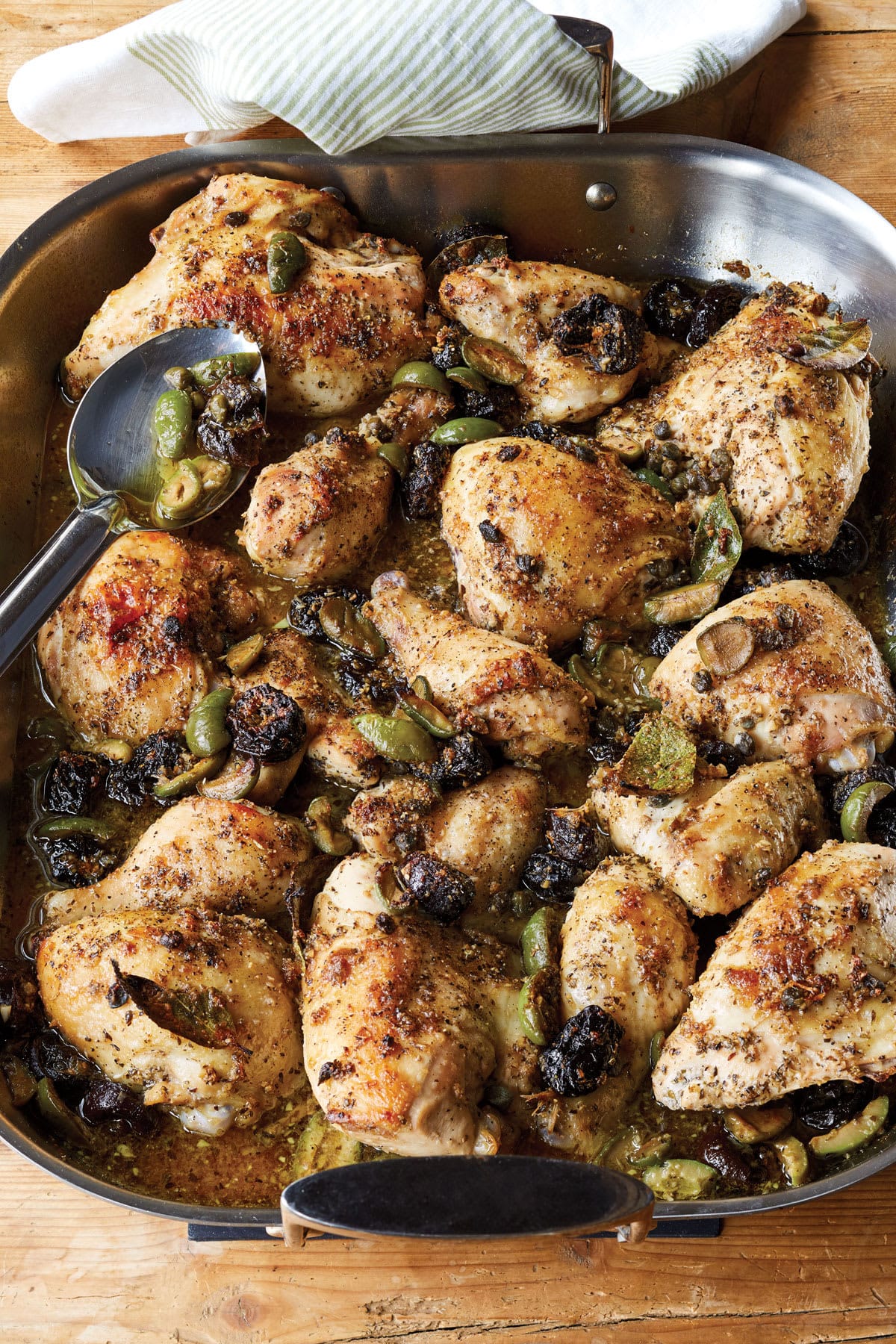
- Cut the chicken: Take a whole chicken and using sharp kitchen scissors, cut the backbone out (reserve it for making stock if desired). Then press down firmly on the breastbone to flatten the chicken. Separate the legs and thighs at the joint, then remove the wings and tips. For even cooking, try to make all pieces roughly the same size. If the breast pieces are very large, cut them in half.
- Make the marinade: In a large glass or ceramic bowl (avoid metal which can react with the vinegar), combine the bay leaves, garlic cloves, prunes, olives, capers with juice, red wine vinegar, olive oil, dried oregano, 1 teaspoon kosher salt, and 1/2 teaspoon black pepper. Stir thoroughly to combine all flavors. Add the chicken pieces and massage the marinade into the meat. Be sure to gently lift the skin and push some marinade directly onto the flesh underneath – this ensures maximum flavor penetration.
- Let the chicken marinate: Cover the bowl tightly with plastic wrap or a lid and place in the refrigerator for 8 hours or overnight. This long marinating time is crucial for developing deep flavor, but if you’re in a rush, allow at minimum 30 minutes at room temperature. Turn the chicken pieces halfway through marinating time if possible.
- Roast the chicken: The next day, remove chicken from refrigerator 30 minutes before cooking to take the chill off. Preheat your oven to 350°F (175°C). Transfer the chicken and all the marinade components (prunes, olives, garlic, etc.) into a large oven-safe skillet or baking dish. Arrange the chicken pieces skin-side up, ensuring they don’t overlap – overcrowding will cause steaming instead of roasting. Pour the 1/2 cup white wine around (not over) the chicken. Sprinkle the 1/4 cup brown sugar evenly over the chicken pieces and place in the center rack of the oven. Bake for 50-60 minutes, basting with the pan juices every 15-20 minutes to keep the meat moist and help develop a beautiful glaze.
- Remove from the oven: The chicken is done when an instant-read thermometer inserted into the thickest part (without touching bone) reads 165°F (74°C) and the skin has turned a deep golden brown. If the skin isn’t brown enough but the chicken is cooked, broil for 2-3 minutes watching carefully to prevent burning. Transfer the chicken to a large serving platter and spoon the prunes, olives, capers, and garlic on top and around the chicken. Tent loosely with foil to keep warm while preparing the sauce.
- Make the sauce and serve: Place the roasting pan with all the cooking juices directly on the stovetop over medium heat. Bring the liquid to a simmer, scraping up any browned bits from the bottom of the pan with a wooden spoon (these contain tremendous flavor). Reduce the sauce until slightly thickened and you have about 1/2 cup of liquid, approximately 5-7 minutes. For a smoother sauce, strain through a fine-mesh sieve into a bowl, pressing on the solids to extract all the flavor. Pour the hot sauce evenly over the plattered chicken. Finish with a sprinkle of fresh chopped parsley for color and brightness. Serve immediately while hot, with the sauce spooned over individual portions.
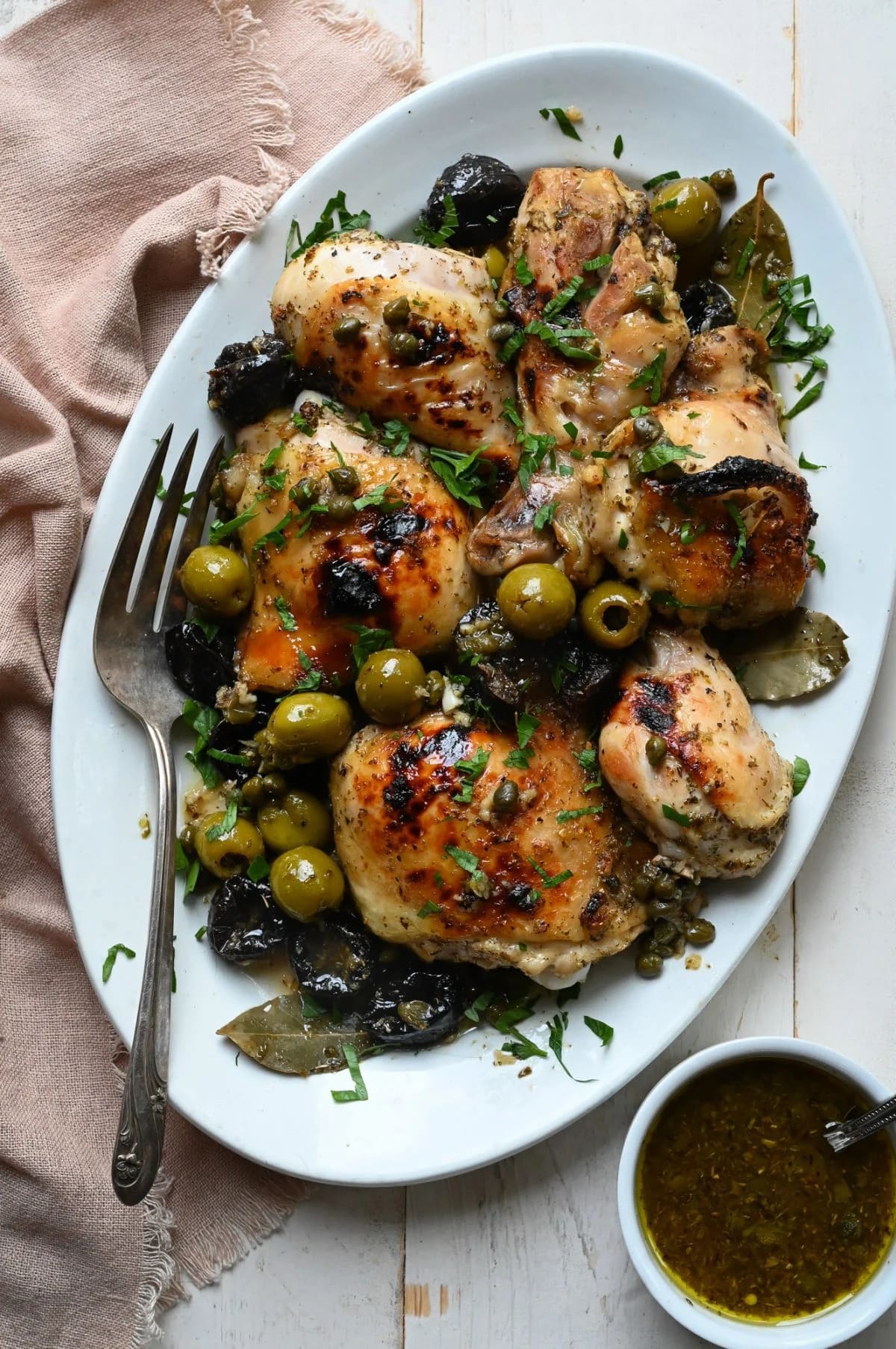
Smart Swaps
- Replace prunes with dried apricots (same amount) for a different sweet note
- Substitute white wine with chicken broth (1:1 ratio) for an alcohol-free version
- Try preserved lemons instead of capers (use 2 tablespoons, finely chopped) for a different tangy element
- Use boneless chicken thighs instead of a whole chicken (use 2.5-3 pounds) for quicker cooking (reduce time to 35-40 minutes)
Make It Diabetes-Friendly
- Reduce brown sugar to 2 tablespoons and add 1 tablespoon of balsamic vinegar for depth (saves approximately 6g carbs per serving)
- Replace prunes with green olives (additional 1/2 cup) to lower the glycemic impact while maintaining flavor complexity
- Serve with cauliflower rice instead of regular rice or potatoes to keep the overall meal lower in carbohydrates
- For portion control, remove the skin after cooking (where much of the sweet glaze concentrates) to further reduce carb content
Pro Tips
- Don’t rush the marinating time—the longer it sits, the more flavor develops
- Pat the chicken skin dry with paper towels before adding the brown sugar for crispier skin
- Save the backbone and make a quick stock while the chicken marinates
- The dish actually tastes better the next day, so consider making it ahead for company
- For a thicker sauce, whisk in 1/2 teaspoon of cornstarch mixed with 1 tablespoon of cold water during the reduction step